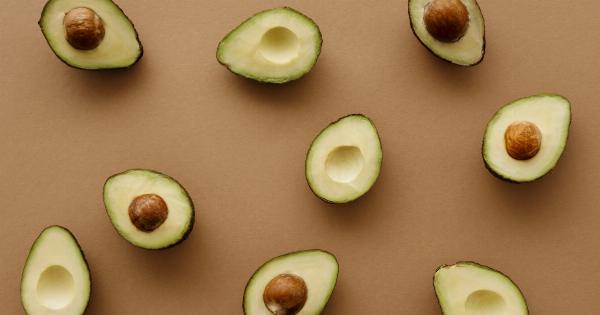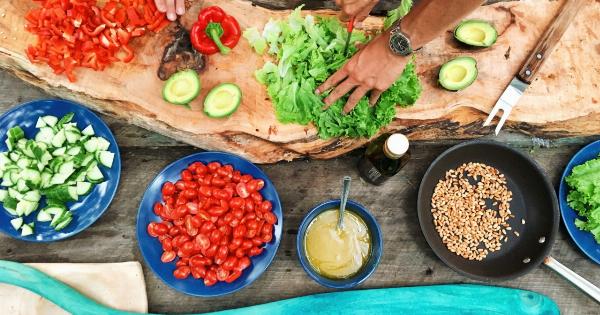Heart disease and stroke are the world’s leading causes of death. According to the World Health Organization, over 17 million people die each year from cardiovascular disease.
While there are several factors that can contribute to the development of heart disease and stroke, a poor diet can significantly increase your risk. However, by making a few simple changes to your diet, you can slash your risk of these diseases and improve your overall health.
Fruits and Vegetables
Fruits and vegetables are packed with nutrients that can help lower blood pressure and cholesterol levels, two of the primary risk factors for heart disease and stroke. Some of the best fruits and vegetables to include in your diet include:.
Berries
Berries are a great source of antioxidants, which can help reduce inflammation and lower blood pressure. Blueberries, raspberries, and strawberries are particularly high in antioxidants and are a great addition to yogurt, oatmeal, or smoothies.
Leafy Greens
Leafy greens such as spinach, kale, and collard greens are rich in vitamins and minerals, including vitamin K, which is important for maintaining healthy blood vessels.
These greens are low in calories and can be easily added to salads, soups, or smoothies.
Citrus Fruits
Citrus fruits such as oranges, grapefruits, and lemons are rich in vitamin C, which can help improve cholesterol levels and reduce inflammation in the body. These fruits can be eaten as a snack, added to salads, or used to make refreshing drinks.
Whole Grains
Whole grains are an excellent source of fiber, which can help reduce cholesterol levels and regulate blood sugar levels.
Including more whole grains in your diet can also help you feel full and satisfied, which can prevent overeating and promote weight loss. Some of the best whole grains to include in your diet include:.
Brown Rice
Brown rice is a great source of fiber, vitamins, and minerals. It can be used in a wide variety of dishes, from stir-fry to salads.
Oatmeal
Oatmeal is a great breakfast option that can help you feel full and satisfied for hours. It is also rich in fiber and can help regulate blood sugar levels.
Quinoa
Quinoa is a tasty and nutritious grain that is high in protein and fiber. It can be used in a variety of dishes and is an excellent alternative to rice or pasta.
Lean Protein
Including lean protein in your diet can help build and maintain muscle mass, which can improve overall health and reduce the risk of heart disease and stroke. Some of the best sources of lean protein include:.
Fish
Fish such as salmon, tuna, and sardines are rich in omega-3 fatty acids, which can help lower cholesterol levels and reduce inflammation in the body. These fish can be baked, grilled, or broiled and are a tasty addition to any meal.
Skinless Chicken
Skinless chicken is a great source of lean protein and can be used in a variety of dishes, from stir-fry to salads. It is important to choose skinless chicken to reduce the amount of saturated fat in your diet.
Legumes
Legumes such as beans, lentils, and chickpeas are an excellent source of protein and fiber. They can be used in a variety of dishes, from soups to salads, and are a great way to add more plant-based protein to your diet.
Nuts and Seeds
Nuts and seeds are a great source of healthy fats, fiber, and protein. Including these foods in your diet can help improve cholesterol levels and reduce inflammation in the body. Some of the best nuts and seeds to include in your diet include:.
Almonds
Almonds are a great source of healthy fats and can help lower cholesterol levels and reduce inflammation in the body. They can be eaten as a snack, added to salads, or used to make almond butter.
Chia Seeds
Chia seeds are high in fiber and can help regulate blood sugar levels. They can be added to smoothies, yogurt, or oatmeal for a nutritious boost.
Flaxseeds
Flaxseeds are a great source of omega-3 fatty acids and can help improve cholesterol levels. They can be added to smoothies, yogurt, or baked goods for a nutritious boost.
Conclusion
While there is no guaranteed way to prevent heart disease and stroke, making changes to your diet can significantly reduce your risk of these diseases.
By including more fruits and vegetables, whole grains, lean protein, and nuts and seeds in your diet, you can help improve your overall health and reduce your risk of heart disease and stroke.

























